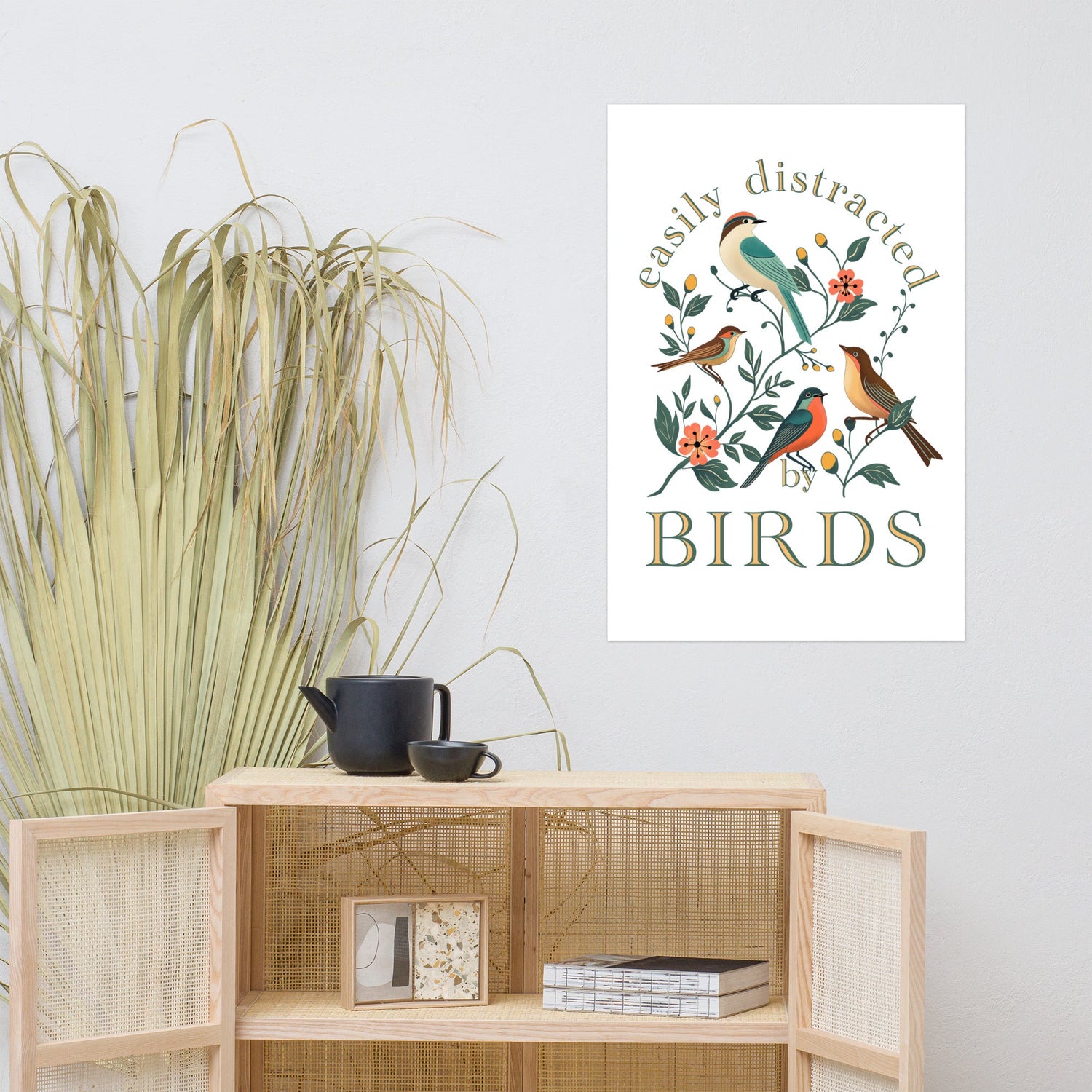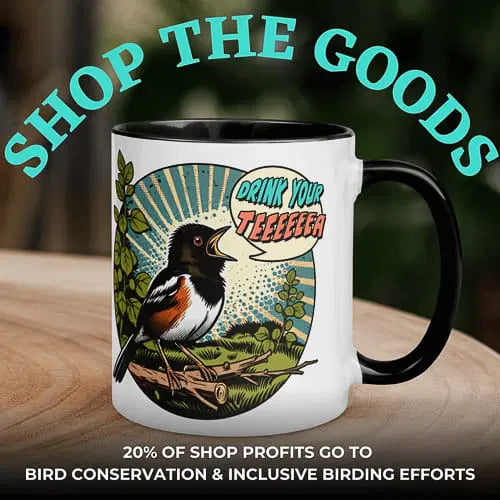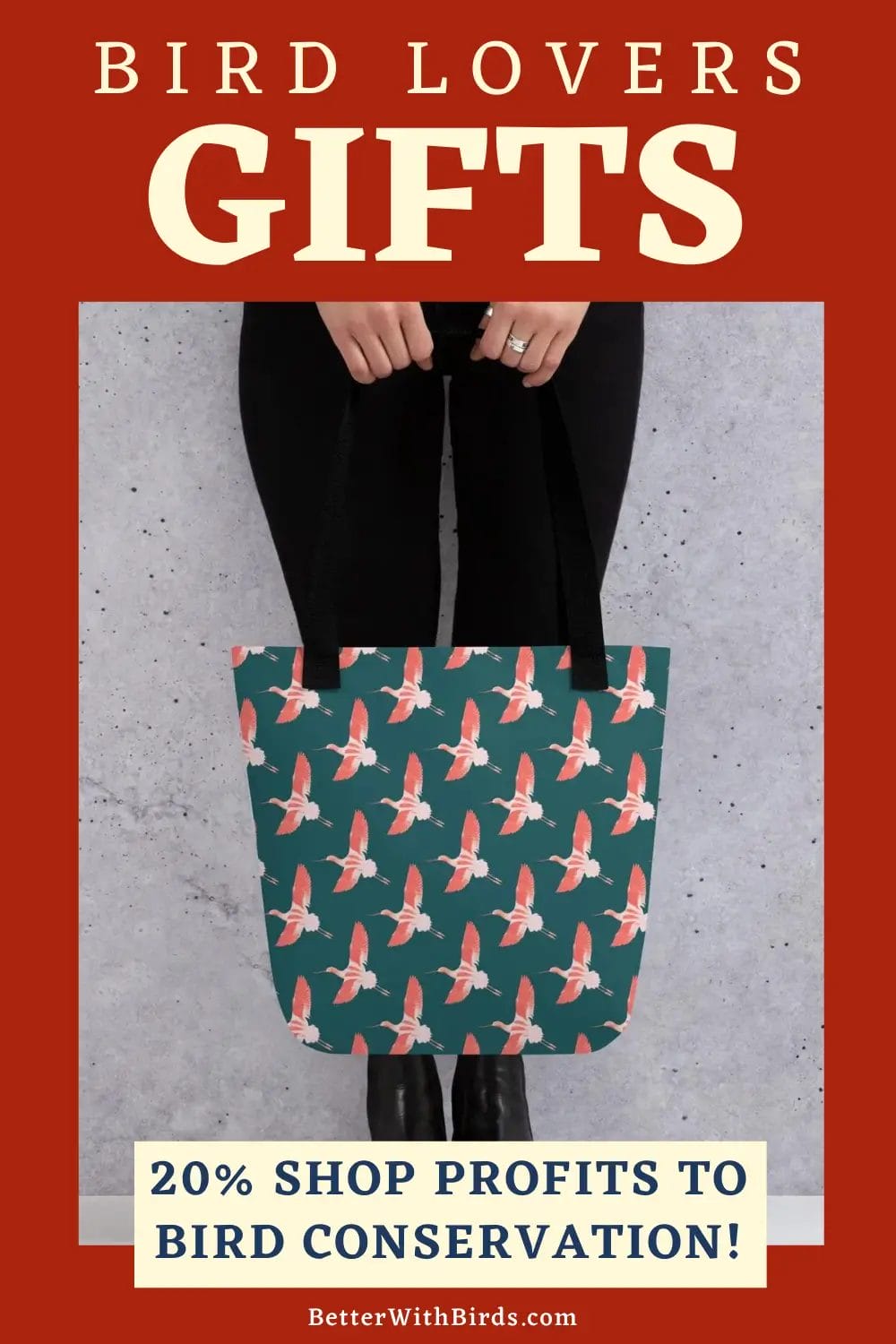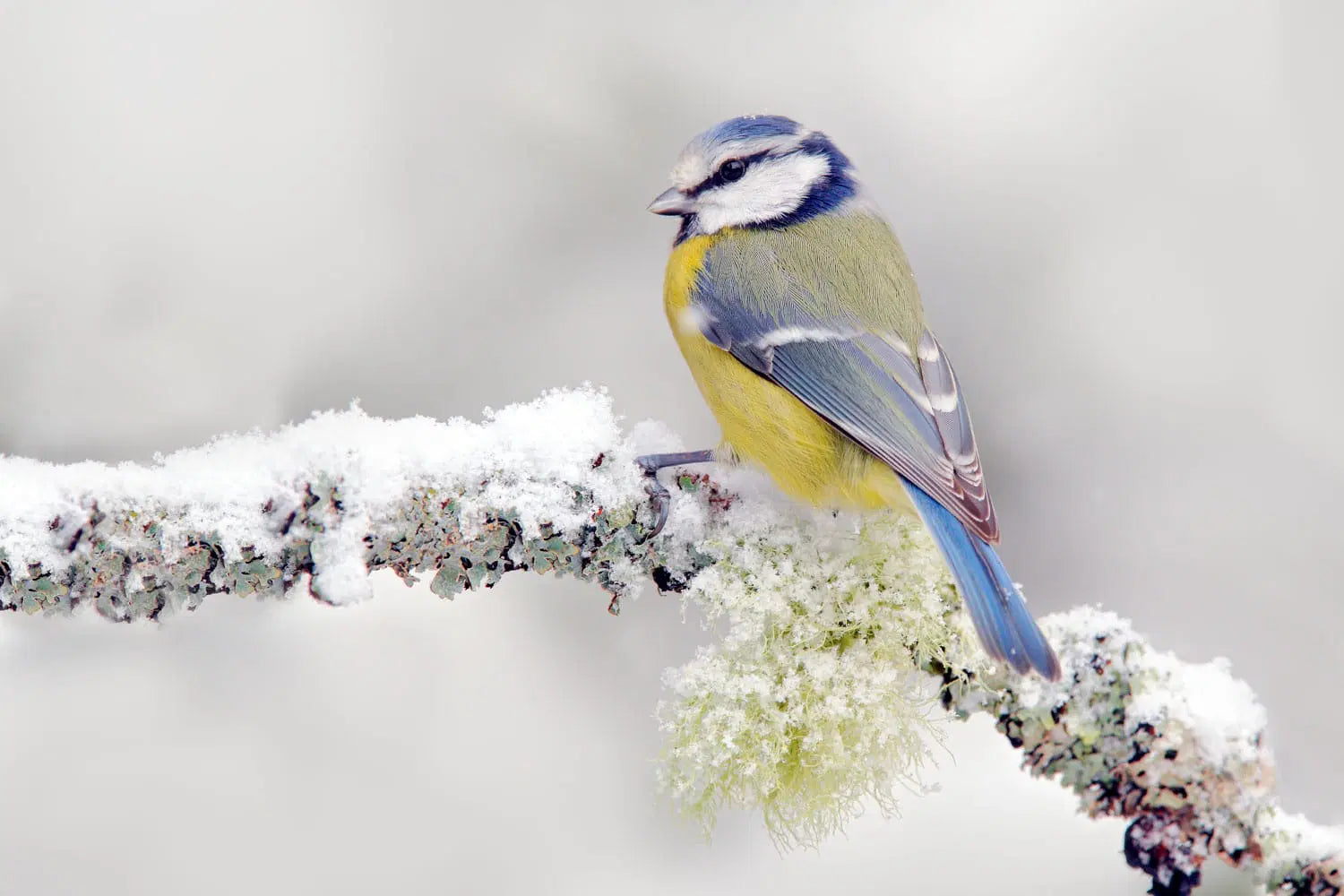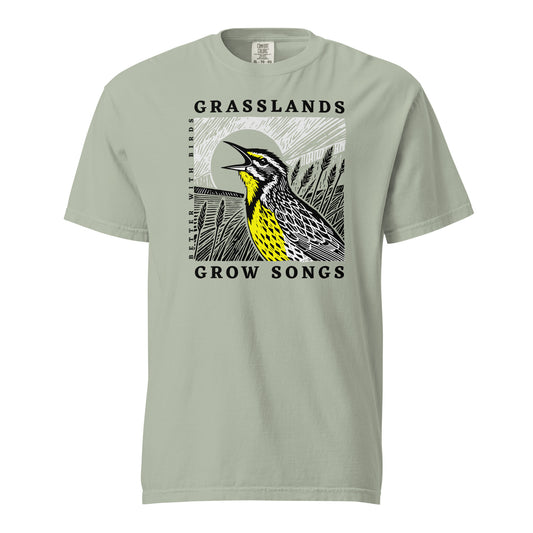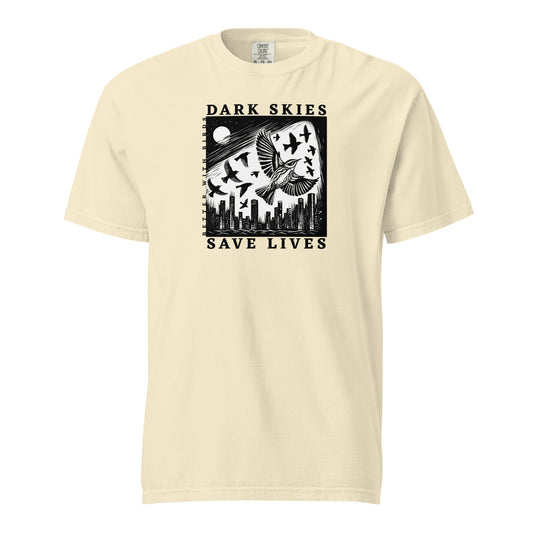Summer Gardening Tips for a Bird-Friendly Backyard
Feature Photo: Steve Cymro / Shutterstock
Read Time: 8 minutes
Backyard Birding , Attracting Birds , Bird-Friendly Yards
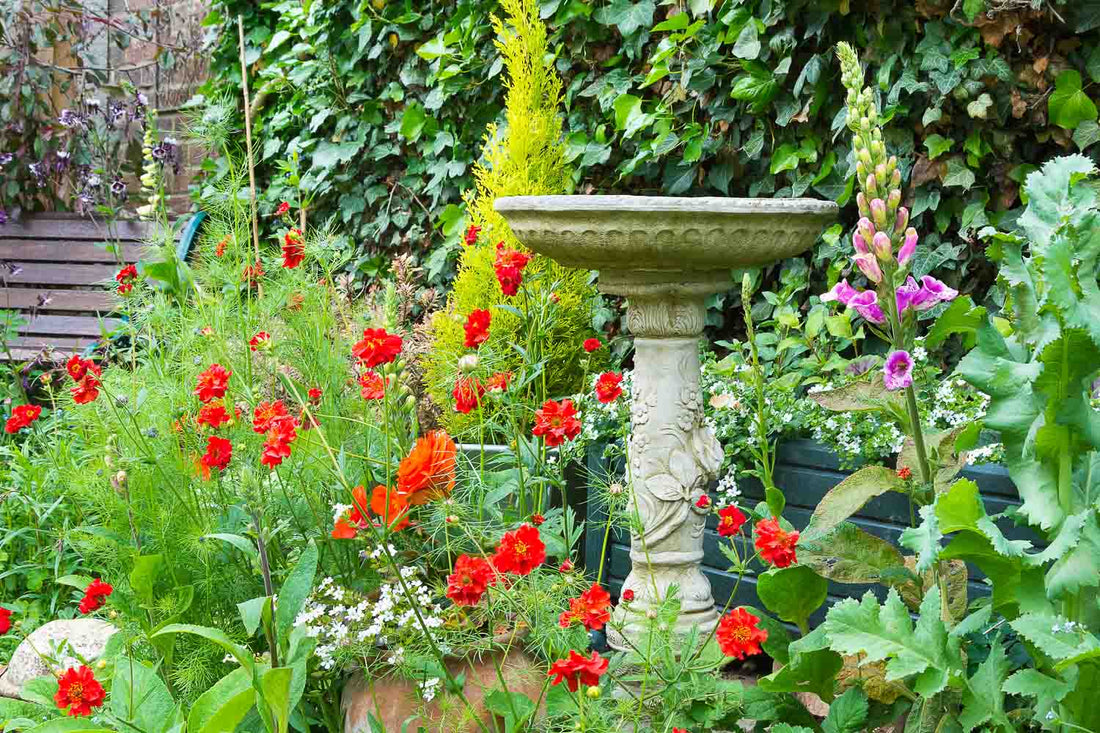
This post contains affiliate links. If you use these links to buy something, we may earn a commission at no additional cost to you. We only recommend products we fully support or use ourselves. Our full disclaimer
PIN THIS FOR LATER

Contents
Ah, summer—not only the season of melted ice cream and perpetual sunscreen reapplication, it's also prime time to transform your yard into a bird-friendly oasis.
While some folks might look at their lawn and see the perfect Slip 'N Slide track, those of us in the know see it for what it really is: hot real estate for birds!
(Though a Slip 'N Slide and bird features are not necessarily mutually exclusive.)
Creating a diverse habitat with a variety of bird-friendly plants can significantly enhance the chances of attracting birds to your home. And, with habitat loss on the rise, your backyard can be a much-needed sanctuary for our feathered friends who just need a little R&R—rest and roost.
Planning Your Bird-Friendly Garden
When planning your bird-friendly garden, think of yourself as a landscape architect for the avian elite. The goal is to create a space that’s not just aesthetically-pleasing, but also safe, practical, and with the resources birds need.

Photo: Jaymi Heimbuch
1. Keep the "Pantry" Stocked
Food is the number one way to get birds through your garden gate. Birds eat a variety of foods, including insects, seeds, berries, and nectar, so incorporate a mix of native trees, shrubs, and flowering plants that'll provide those essential food sources.
A diverse native landscape is essential for supporting all types of wildlife and providing food and shelter throughout the year, not only in the heat of summer but also for winter birds during the colder months. Plus, native plants are adapted to your local climate, meaning they require less water and maintenance.
Combining native plants with bird feeders to supplement will ensure you have the meal bases covered. But don't just fill them with just any ol' food—make sure you’re serving up something nutritious and delicious, not just the bird equivalent of gas station snacks we’re forced to consume on our own summer road trips.
And the serving platters to serve the food? Here are few feeder types to check out:
- Platform Feeders – Great for larger birds like cardinals and jays. We love this recycled plastic platform feeder from Kingsyard.
- Tube Feeders – Perfect for small finches and chickadees. Fill them with black oil sunflower seeds or nyjer. Check out this Squirrel Buster option that holds 2.4 lbs of seed.
- Hummingbird Feeders – Skip the red dye! A simple mix of 1 part sugar to 4 parts water does the trick. Go with a simple feeder or class it a bit. We can't help that we love pretty things. And, this hand-blown glass hummingbird feeder is, dare I say, quite pretty.
- Suet Feeders – Best saved for cooler mornings. Melty suet in July? Eww. This Kingsyard option let's you feed two birds with one feeder. (It'll actually feed more than two birds; we're just using wordplay to get across that it's both a platform feeder and a suet feeder. Massive eye roll, fair enough.)
- Feeder Cameras – Capture all the excitement of chow time with a bird feeder camera. No matter where you are, you can take a look at who's hanging out catching a snack at your place.
Pro Tip:
Plant a mix that blooms throughout the summer, providing a steady supply of snacks from June through August. Birds love variety. Your garden should be like a seasonal tasting menu.
We give 20% of all shop profits to bird conservation & inclusive birding efforts.

Photo: Tony Quinn / Shutterstock
2. Bring in the Water
Summer is hot. Birds, like the rest of us, need to cool down. A bird bath or other water feature can make your yard feel like a luxury spa resort. Birds will flock to it—not just for bird bathing or to drink, but to splash around, preen, and show off.
And, sure, the concrete bowl from the garden center works fine, but why stop there? Birds love moving water. Consider adding a dripper or even a waterfall(!) to create that spa-like atmosphere. Bonus: The sound of water tends to attract birds.
- Shallow is Better – Birds don’t need the deep end of the swimming pool. Keep water levels at about 1-2 inches deep.
- Layer the Space – Place flat stones or pebbles in the bath to give birds a place to perch. Tiny warblers need a break, too!
- Keep It Clean – Standing water = mosquito breeding ground. Scrub your birdbath every few days to keep it fresh. You can also set up a Water Wiggler to keep mosquitos from laying eggs.
Pro Tip:
If you’re feeling fancy, add a fountain or even build a small backyard pond. If you opt for a pond, just be sure to keep the water circulating.
We give 20% of all shop profits to bird conservation & inclusive birding efforts.
3. Build a Bird Neighborhood
Alright, we’ve covered the snacks and hydration, now let’s talk real estate. Birds aren’t just visiting your garden for a quick bite; some are scouting for prime nesting spots, while others just want a safe, cozy place to take a load off for a bit. Offering a variety of nesting and shelter options turns your backyard into a thriving bird neighborhood.
Nest boxes are the suburban dream homes for many birds. However, if you just slap up a generic birdhouse, you might not get the tenants you were hoping for. Birds are picky, and for good reason. Here's what matter most to them:
- Hole Size – Different birds need different-sized entrance holes. A hole that’s too large can invite unwanted guests (I’m looking at you, squirrels and starlings).
- Height and Placement – Mount nest boxes 5 to 10 feet off the ground. Bluebirds prefer open fields, while wrens and chickadees like boxes near shrubs or wooded areas.
- Ventilation and Drainage – Make sure the birdhouse has small openings near the top for airflow and at the bottom for drainage. No one wants a muggy, damp house.
Pro Tip:
Skip the perch! While it might look cute, perches make it easier for predators to raid the nest. Most birds don’t need them anyway. There are loads of awesome birdhouse options, but we're pretty into this stylish birdhouse made from recycled milk jugs.

Photo: Jaymi Heimbuch
4. Leave the Bugs Alone
I know bugs aren’t exactly on your summer picnic guest list. But to insect eating birds? Bugs are the main course. Insects provide essential protein, especially for baby birds. Without them, those adorable fledglings won’t have the energy to learn how to fly!
Before you reach for the bug spray, take a breath. Instead, let nature handle it. Birds like warblers and flycatchers are expert pest control agents. They’ll gladly snack on beetles, caterpillars, and mosquitoes.
- Leave Some Areas Wild – Let one corner of your yard grow wild with native grasses and flowering weeds. Bugs will flock there, and so will the birds.
- Skip the Chemicals – Pesticides harm insects and poison the food chain. Stick to organic methods if absolutely necessary.
- Bug-Friendly Plants – Milkweed, goldenrod, and sunflowers attract the kind of bugs birds want to eat. Just make sure the variety you opt for is a native species suitable for your area.
Embrace the bugs, and the birds will follow. It’s a win-win (unless you’re a caterpillar).
Pro Tip:
Got some leftover grass clippings? Leave them in a pile near the wild corner of your yard. Insects love to burrow into soft, organic materials—and birds love picking through them for snacks.
5. Let There Be Shade
Summer heat isn’t just tough on you—birds feel it too. When the sun’s blazing, birds need shady spots to cool down. Your yard can be their perfect retreat if you provide the right cover. Rather than opting for open, exposed lawns, plant a mix of trees, shrubs, and tall grasses that provide layers of shade and protection. These natural hideaways offer a break from the heat and a safe place for birds to raise their young.
- Tall Trees – Tall trees provide a safe spot for birds to post-up. Nurture and water your existing trees, especially during the summer when potential drought can take a deadly toll, and plant new ones wherever there's space. Products like the Treegator can help keep trees hydrated.
- Dense Shrubs – Shrubby layers give smaller birds, like sparrows and wrens, a place to hide and forage. Bonus: Shrubs with berries provide both food and shelter.
- Ground Cover – Native grasses and wildflowers create cool, low-to-the-ground hiding spots for ground-feeding birds and their chicks.
Give birds a place to cool off, and they’ll stick around—even when temperatures soar.
Pro Tip:
Layer a few large plants - even potted plants work - around your birdbath. Not only does this create instant shade, but it also gives skittish birds a quick hiding spot while they drink or bathe. Think of it as poolside cabanas for the avian crowd!

Photo: Shelagh Duffett / Shutterstock
6. Minimize Hazards
Creating a bird-friendly garden isn’t just about providing food, water, and shelter; it’s also about ensuring a safe environment. Birds face numerous hazards, from pesticides to predators, and it’s our job to minimize these risks.
First of all, like we already mentioned, ditch the pesticides. These chemicals don’t just kill pests—they can also harm birds and other wildlife. Instead, opt for natural pest control methods, like attracting beneficial insects or using physical barriers.
Next, do a safety sweep of your garden. Remove any sharp objects or loose wires that could injure birds. Reflective surfaces like mirrors or windows can confuse birds and lead to collisions, so consider using decals or screens to make them more visible.
To help fortify the feathered fortresses:
- Baffle Up – Add metal baffles to feeder and nest box poles. Squirrels and raccoons are foiled.
- Go High – Mount nest boxes 6-10 feet off the ground. No low-hanging fruit for predators.
- Thorny Barriers – Plant dense, thorny shrubs around nesting areas.
- Trim Trouble – Cut back branches near feeders and birdhouses to block launch points.
- Tight Entrances – Use nest boxes with small holes to keep bigger intruders out.
Pro Tip:
Hang feeders or birdhouses near thorny plants. Birds can weave through the thorns, but predators? Not so much.
We give 20% of all shop profits to bird conservation & inclusive birding efforts.
A Note on Cats
We love cats, but do birds? Not so much. The fact is: domestic cats kill birds. Even the chillest feline can turn into a backyard assassin when a bird flutters by. And, as much as your fluffy baby is a sweet cuddle muffin to you, they pose a significant danger to birds. Add raccoons and snakes to the mix, and suddenly your bird haven can become a danger place.
The simplest way to protect backyard birds is to keep your cat indoors. It might feel a little unfair, but it’s the best way to prevent unwanted hunting sprees. If your cat insists on outdoor time, consider building a catio—an enclosed outdoor space that lets cats enjoy the fresh air without threatening wildlife. For those who prefer a less DIY approach, supervised and leashed outdoor time works too. A watchful eye (and maybe a spray bottle) can keep your cat from turning your yard into a hunting ground. The birds will thank you, even if your cat gives you side-eye.

Photo: Bildagentur Zoonar GmbH / Shutterstock
7. Maintaining Your Bird-Friendly Yard
Maintaining a bird-friendly yard is a year-round commitment, but it doesn’t have to be a chore. With a little seasonal care, you can keep your garden a haven for birds throughout the year.
- Spring: This is the time to plant native flowers, shrubs, and trees that will provide food and habitat for birds. Clean and maintain your bird feeders and bird baths to ensure they’re ready for the influx of spring migrants.
- Summer: Keep your bird baths filled with fresh water and clean them regularly to prevent algae buildup. Maintain your bird feeders and provide a variety of food sources to keep your feathered visitors well-fed.
- Fall: Plant native grasses and flowers that will provide seeds and habitat for birds. Clean and maintain your bird feeders and bird baths to prepare for the winter months.
- Winter: Provide high-energy foods like suet and seeds to help birds survive the cold. Keep your bird feeders clean and well-stocked, and ensure your bird baths are free of ice.
By following these tips, you’ll maintain a bird-friendly yard that provides a welcoming and sustainable habitat for birds throughout the year.
And, Finally! Appreciate Your Hard Work!
Supporting bird populations is a big deal. This not only helps birds thrive but also fosters environmental stewardship and educational opportunities for all of us - Children! Adults! Even surly teens!
Summer birdwatching from the comfort of your backyard is one of life’s simple pleasures. Keep your binoculars and birding journal at the ready so you're always prepared to observe the garden birds you've worked so hard to welcome home.
Your backyard bird haven will not only provide crucial support to local wildlife but also make your garden a buzzing, chirping, thriving retreat.
So, grab your gardening gloves, plant those flowers, fill those feeders, and let the birds know—summer at your place open for business!
